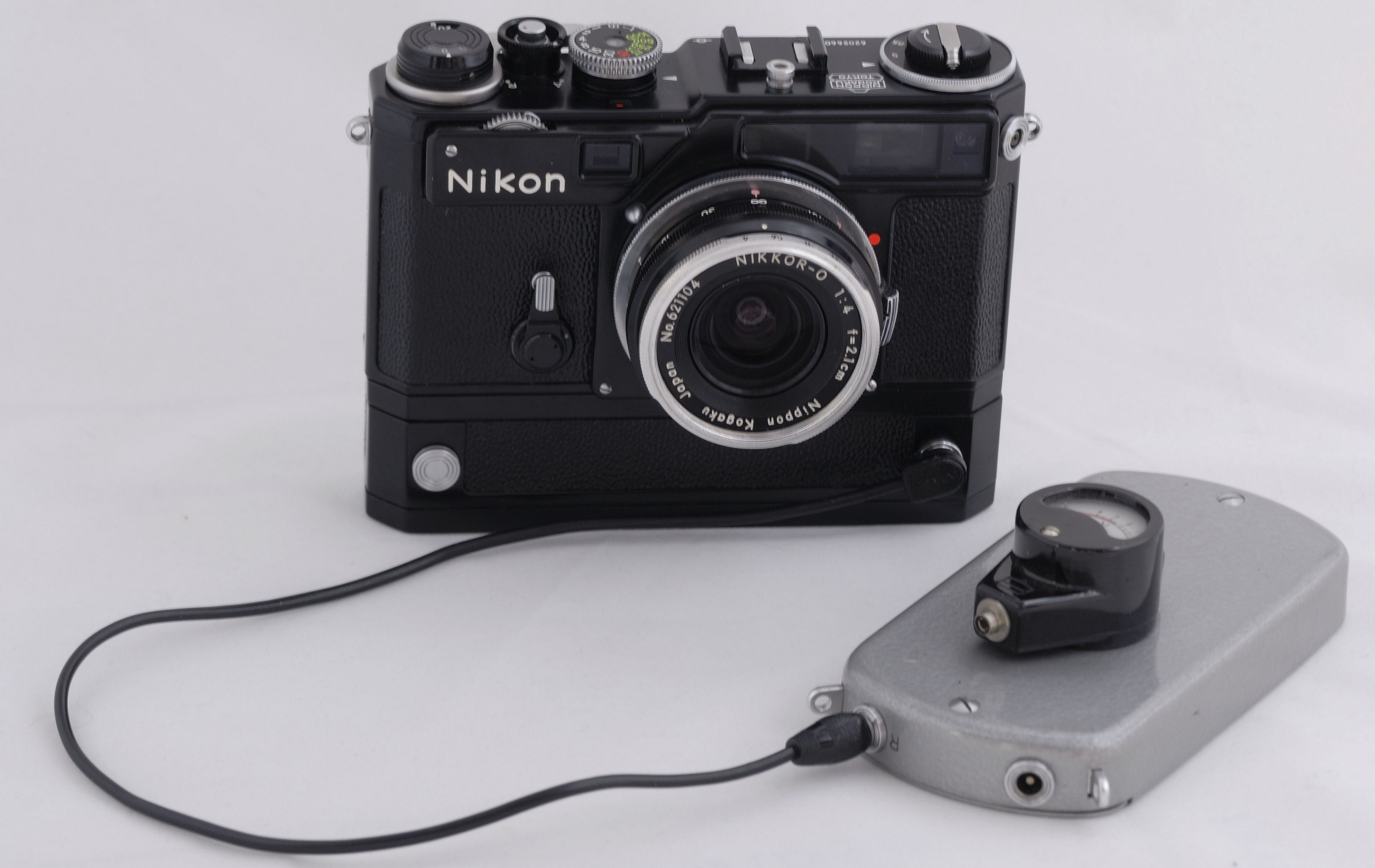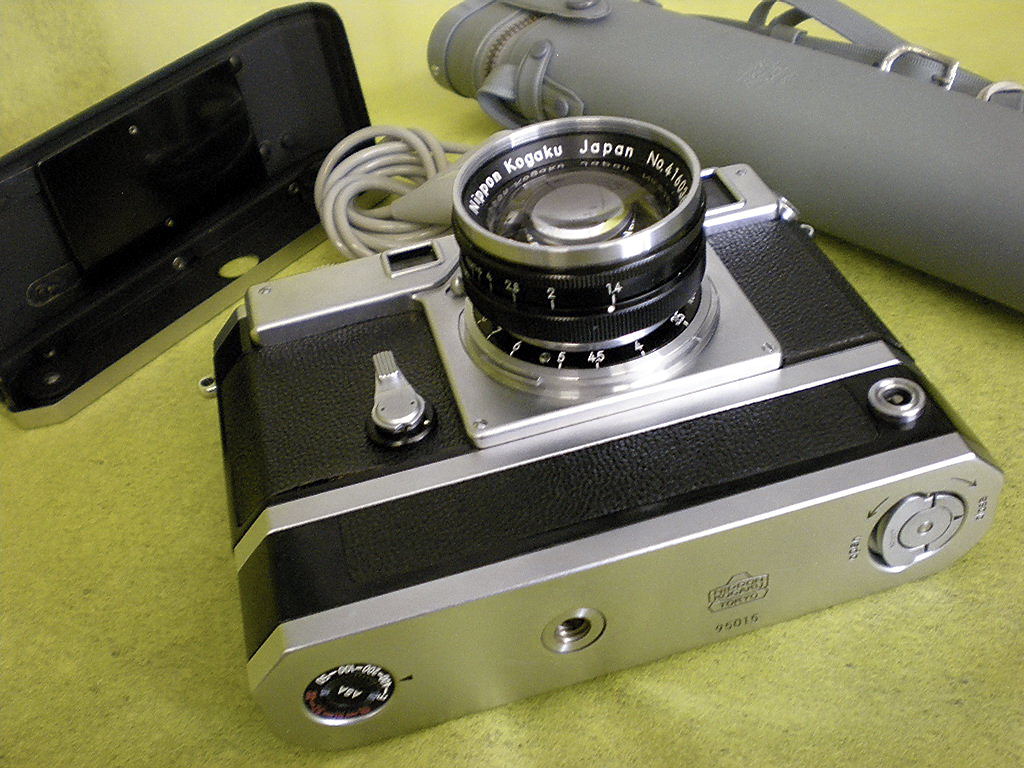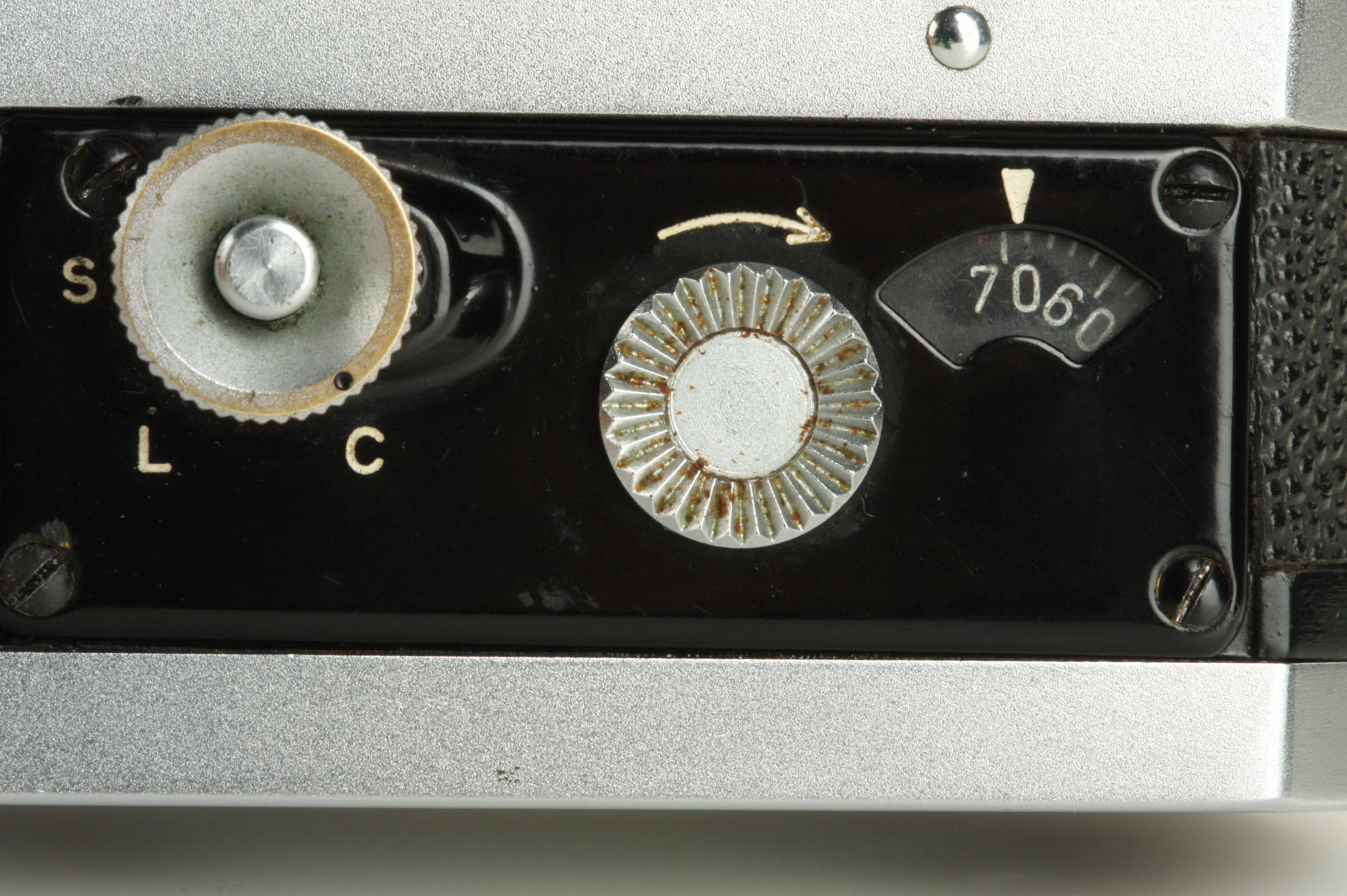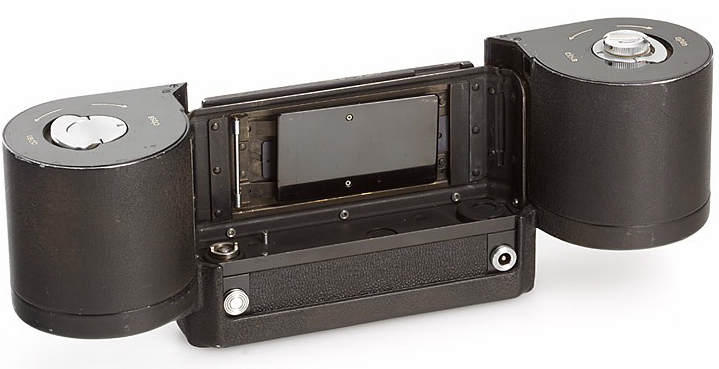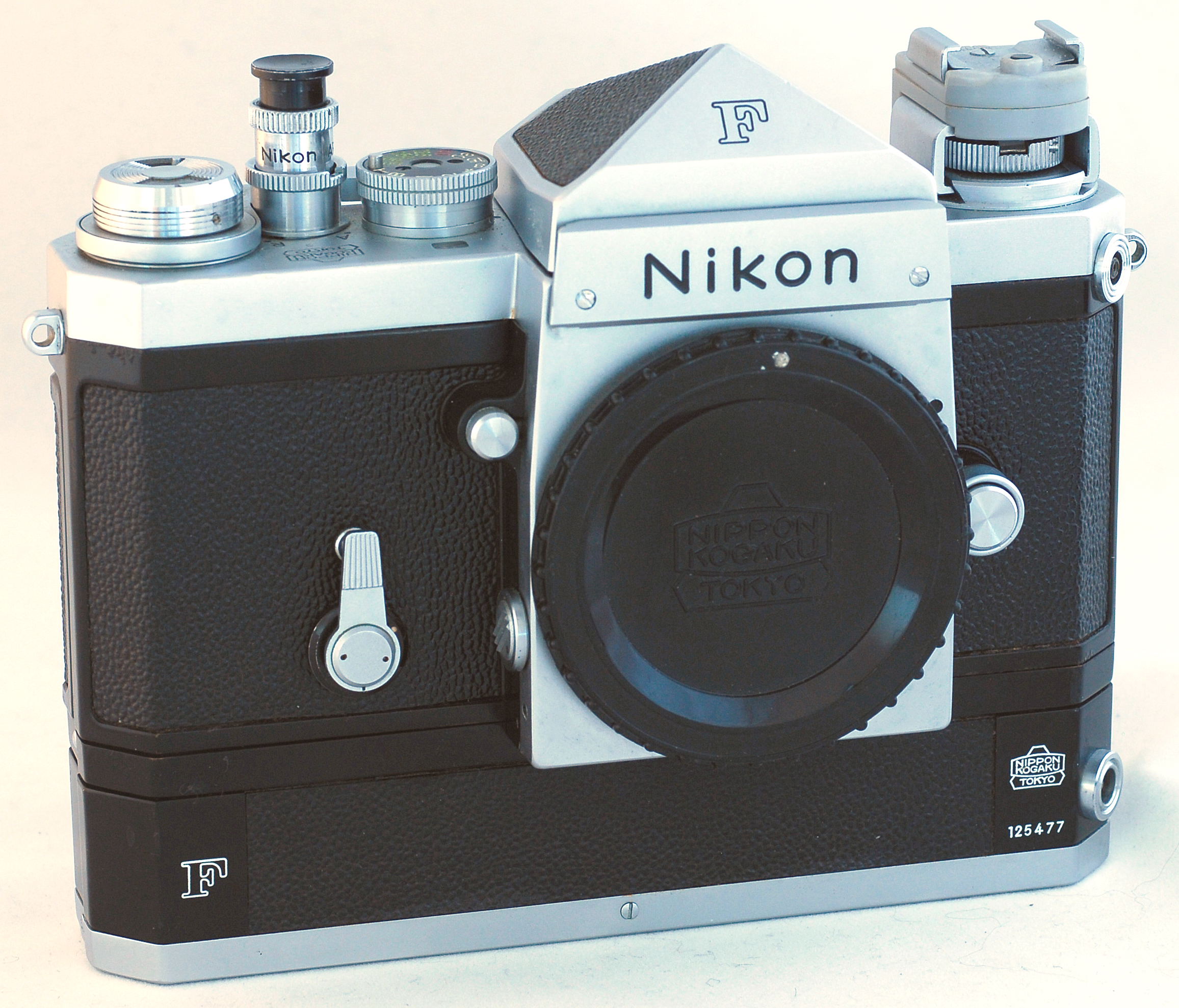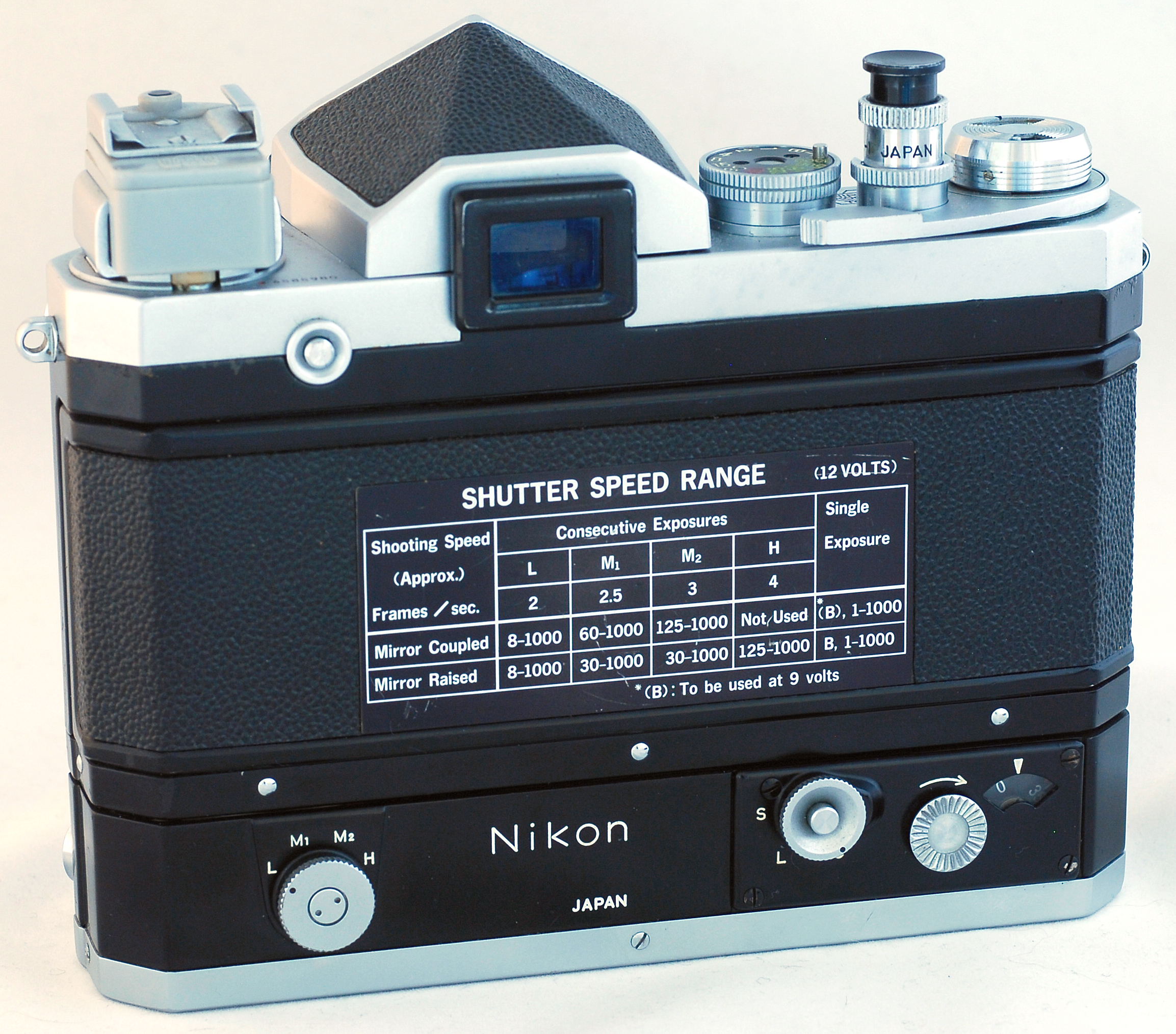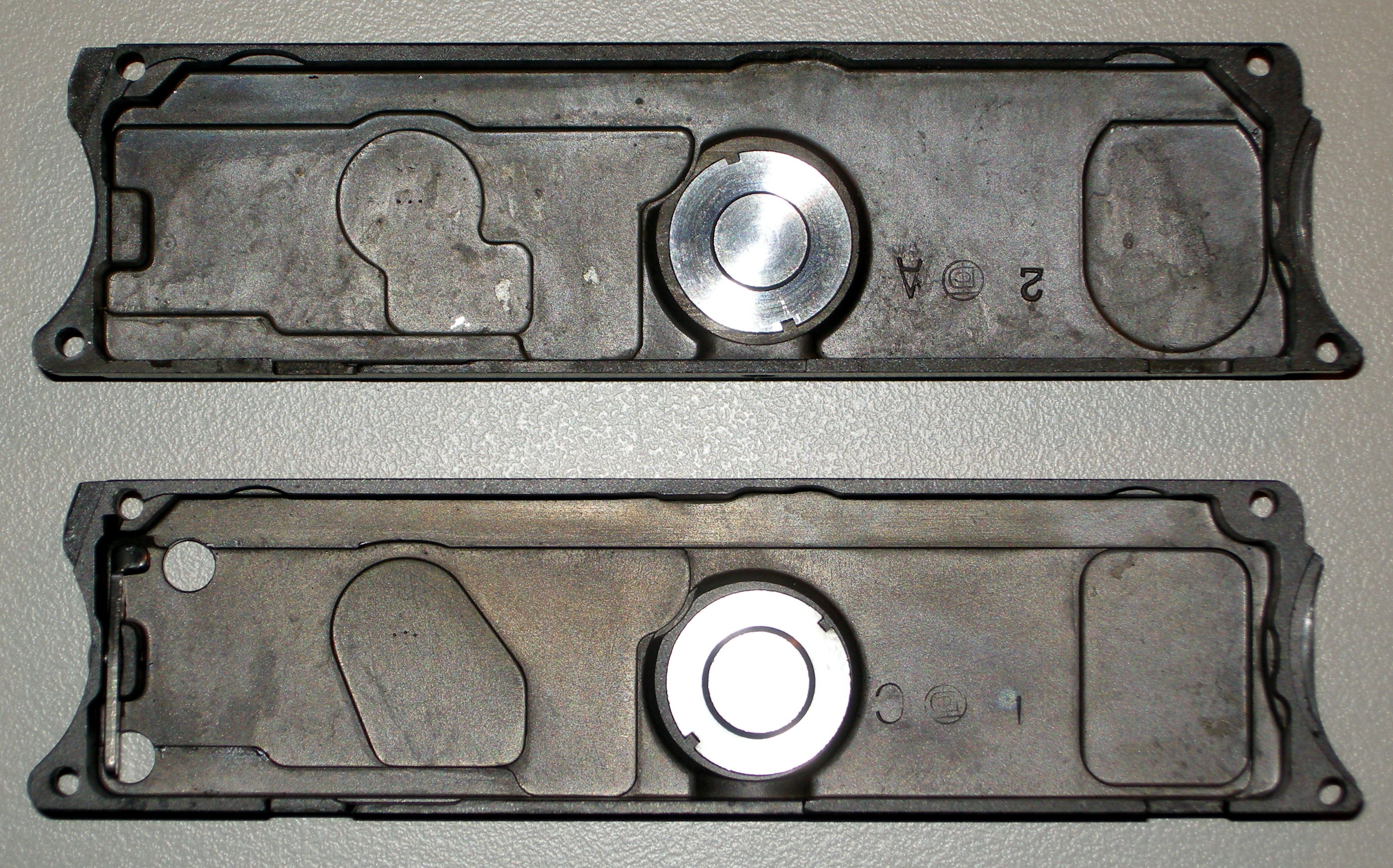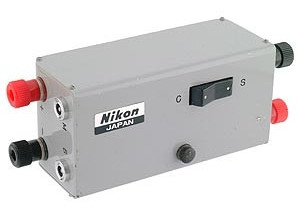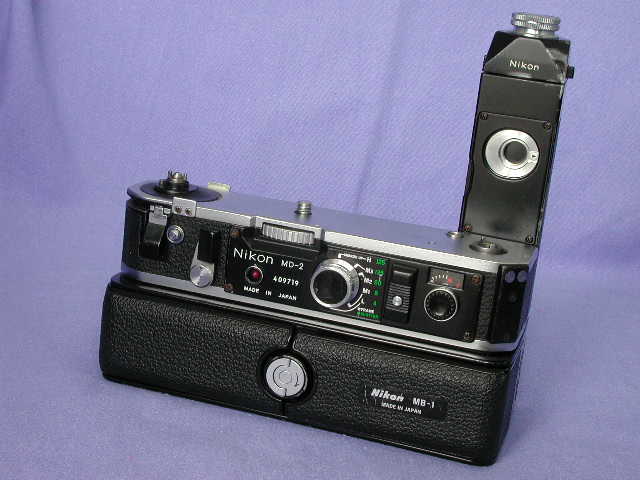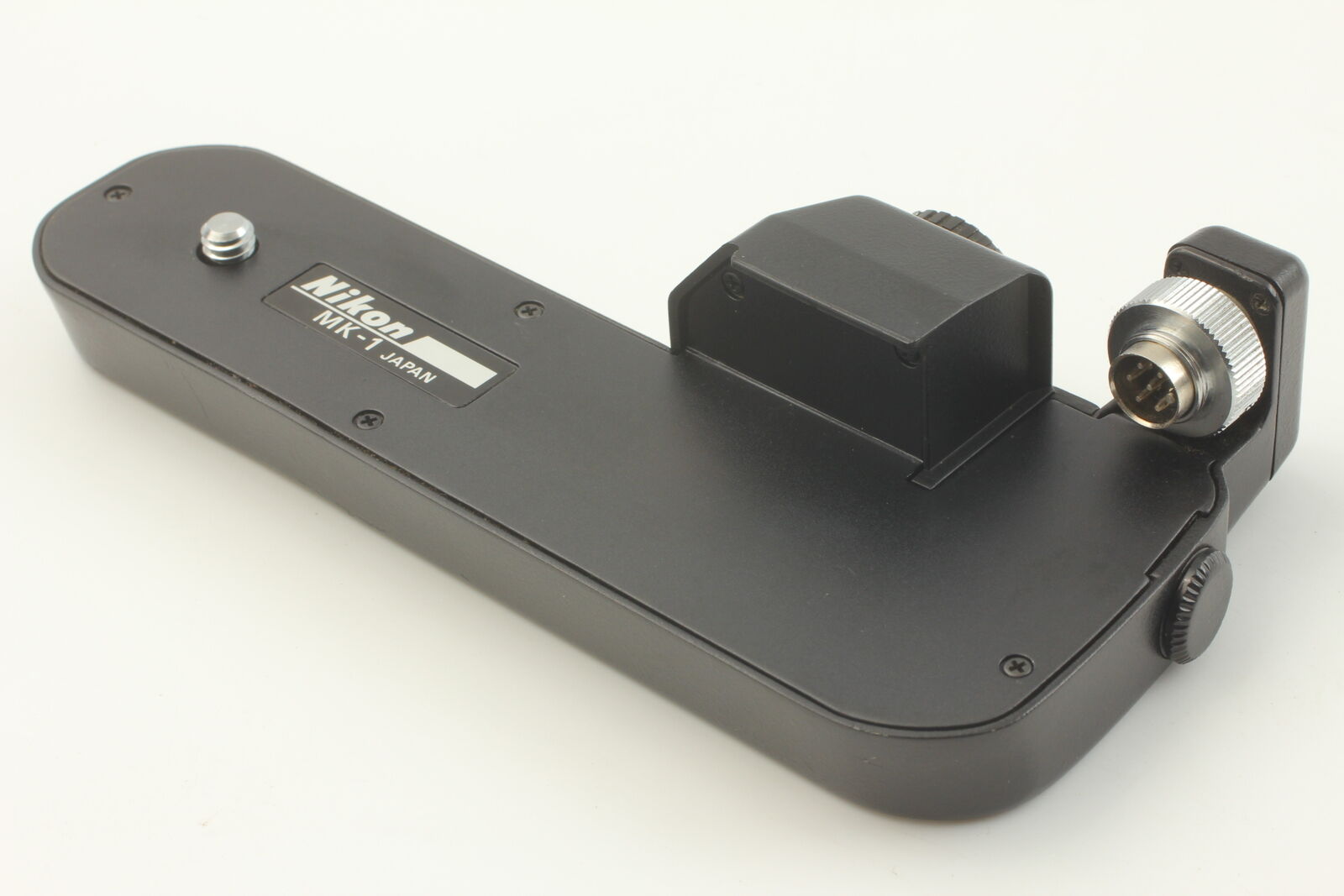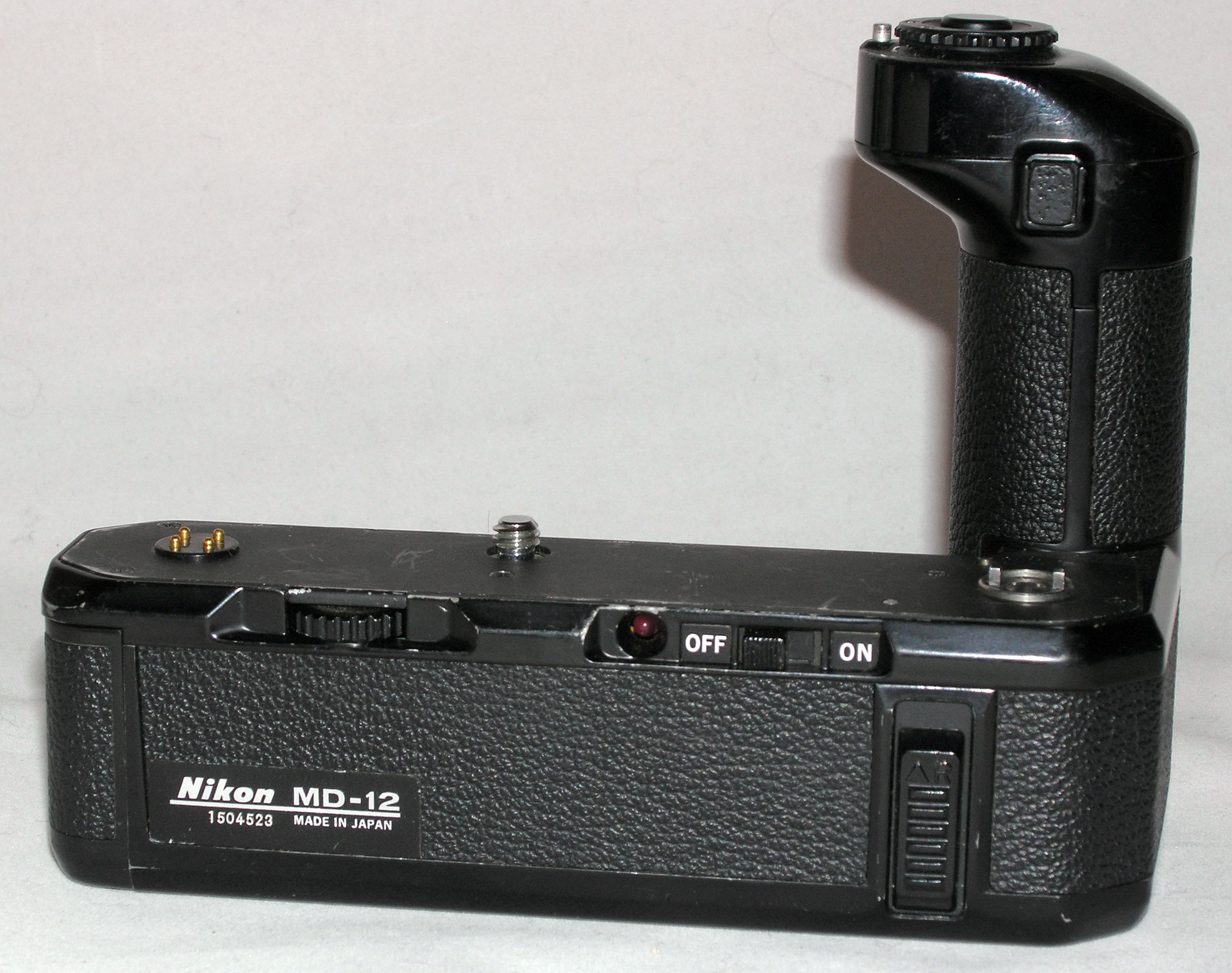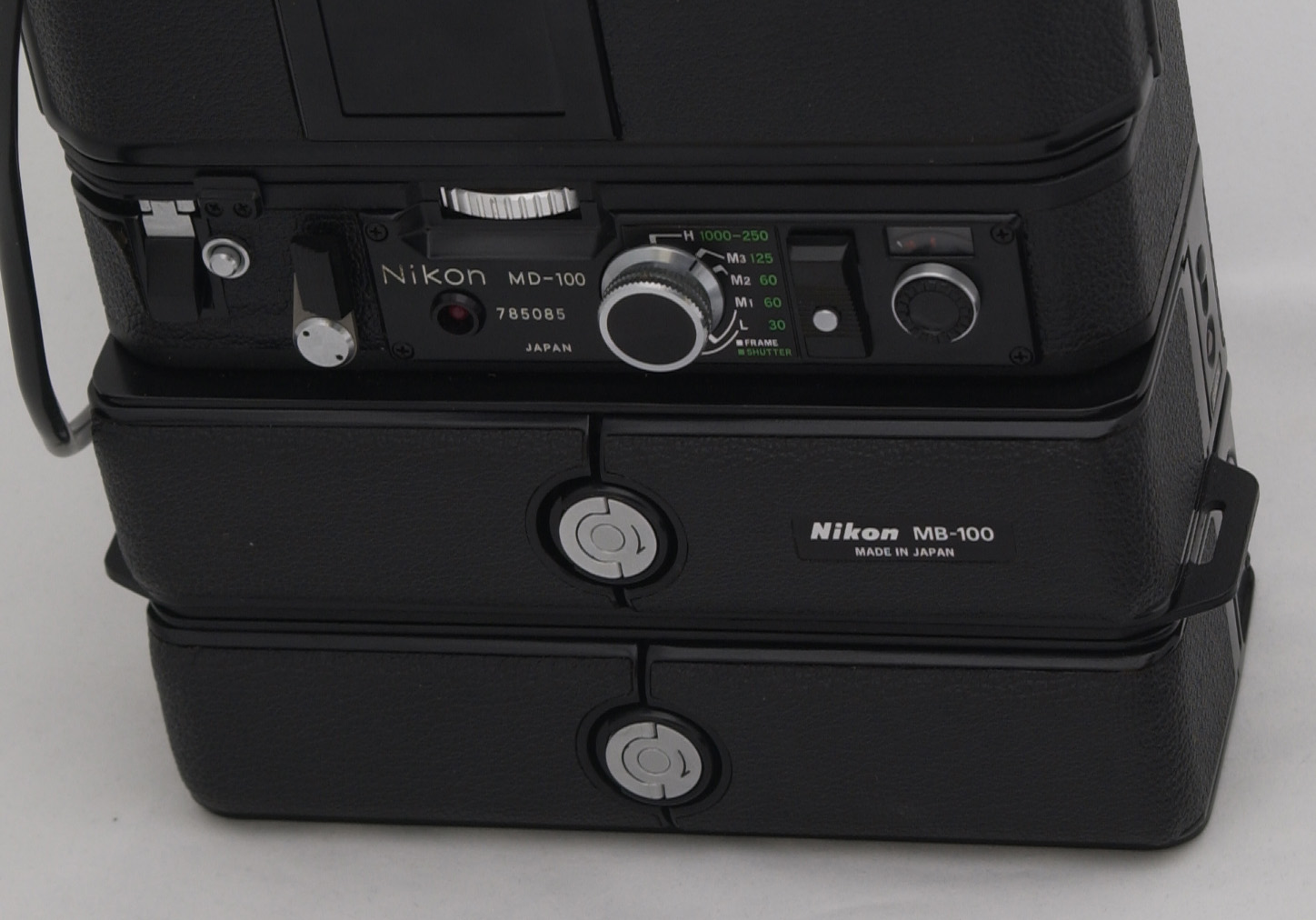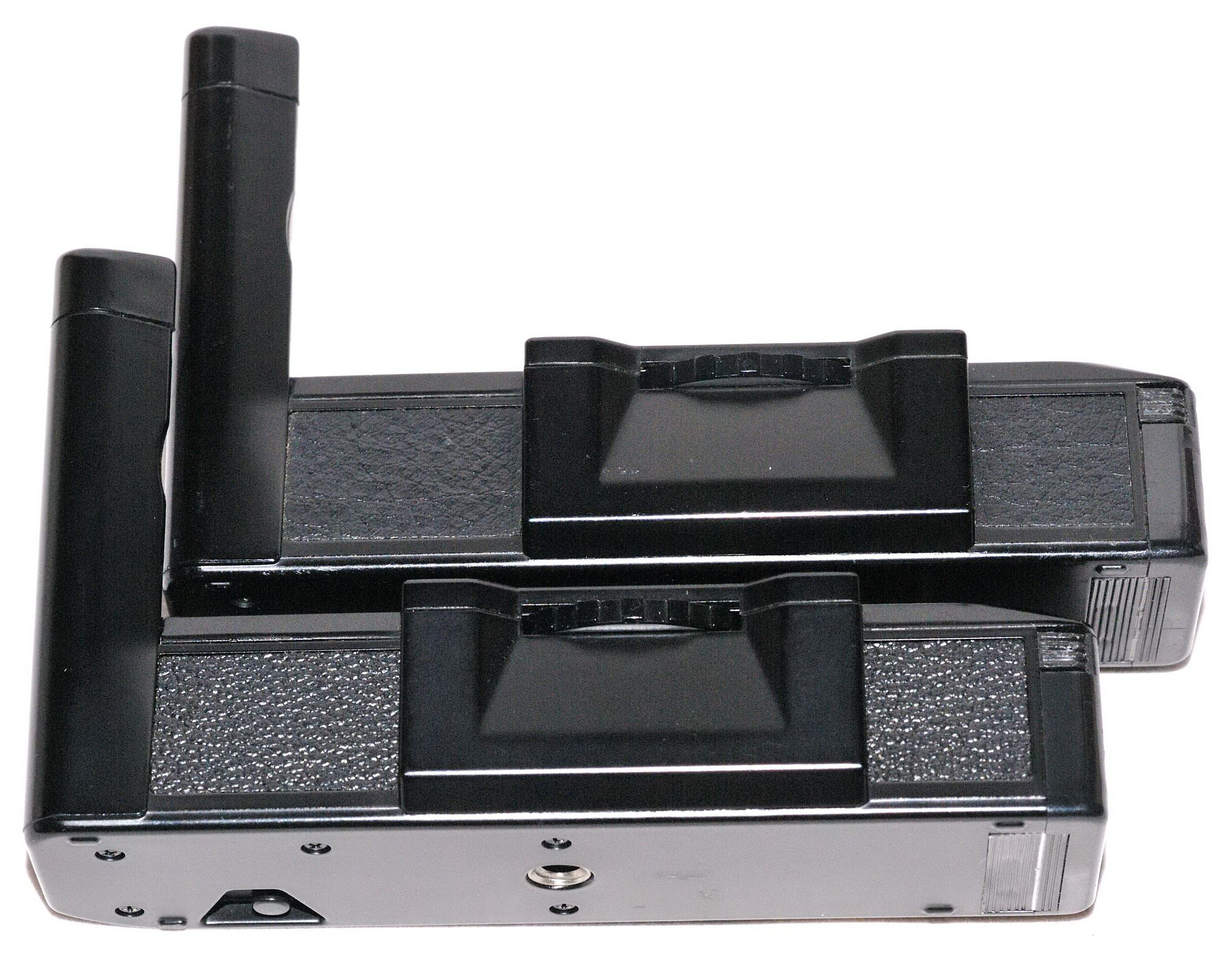Nikon Motor Drives
IntroductionSince the invention of electricity people are fascinated by all kind of gear driven by an electric motor. Many cameras were driven by a spring motor, but the first portable camera driven by an electric motor was the Moy & Bastie 35mm.-movie camera, introduced in 1911. This camera became the model for the still famous Arriflex movie cameras, built by Arnold & Richter in Munich, Germany. Cameras with a spring motor, like the 1898 Japy Le Pascal (France) or the 1922 Debrie Sept weren´t a great success. In 1948 Bell & Howell introduced The Foton 7 35mm. spring motor driven camera. It was a nice and sturdy camera but very expensive. It was listed at US$ 700.- which was twice as much as a Nikon S. Note: The motor drives listed below are powering the film advance system of the mentioned cameras only. Most motor drives do not rewind a film. The highest speed of a motor drive will be obtained when the motor drive, its batteries and the camera are in top condition and at shutter speeds above 1/250th sec., only. The batteries for the light meter shouldn´t be removed! Nikon Motor DriveNikon experimented since 1953 with a camera with spring motor, but it never reached the market. In 1955 Nikon decided to develop an electric motor; Mr. Shigetada Fukuoka started in October 1956 testing several models. At the IPEX (International Photo Equipment Exposition) in Washington (USA) in March 1957 the first motor drive on a Nikon S2 was shown. As that motor drive wasn´t available before the introduction of the Nikon SP in September 1957 many people think that this motor was developed for the Nikon SP. That isn´t the case, as the Nikon S2E was the first Nikon with a motor drive. This camera is very rare however. As all Nikon rangefinder cameras have a back with an integrated bottom (or bottom with integrated back!) the first motor drive has an integrated back as well. The motor drive - initially - was powered by 6 AA (R6) batteries, but because of their low capacity Nikon changed to Type C (R14) batteries. At 7.5 Volt the drive is able to advance the film at 2 frames per second; at 9 Volt even at 3 fps. This motor drive, known as the Nikon S36 Motor Drive, will fit the Nikon SP, S3, S3M and S4. The motor+back are not too heavy, as the batteries are carried in a separate battery pack, connected by an one meter cable. Don´t think however that all motor drives will fit any camera! Each rangefinder camera has to be modified to accept a motor drive. Motor drives for Nikon SLR cameras are made specifically for that camera. Nearly all motor drives listed below were available in black only! Nikon S 36
Above a mint Nikon SP in black with a S-36 motor drive, battery pack and volt meter.
Nikon S 72
Above a Nikon SP with very rare S-72 motor drive; enabling to shoot 71 images.
Nikon S 250
Only two Nikon S 250 electric motor drives including a back, made to fit the Nikon SP, are known! It is nearly the same as the one made for the Nikon F. For more details see the chapter on 'backs'.
Nikon F 36Nikon F-36 motor drive + cordless battery power pack
F-36 mounted on a Nikon F On the basis of the S36 a motor drive for the Nikon F single lens reflex camera, which was introduced in 1959, was developed. This F36 also is a back with integrated motor drive. Under the motor drive a power pack with 8 AA-batteries should be placed. This combination (see above) is known as the ´F36 cordless´. With a switch on the motor drive the speed can be selected: L = 2 fps., M1 = 2.5 fps., M2 = 3 fps. and at ´H´ and locked mirror it can master 4 fps. There has been a Nikon Motor Drive F-250 available as well, which could be mounted after some modifications. For special clients special motor drives were made, like the NASA and the US Department of Defense. At the 1972 Winter Olympics in Sapporo (Japan) Nikon introduced a so called High Speed-version with a maximum speed of 7 fps. (a new Olympic record!). A few years later some High Speed-versions were made with a top speed of 10 fps.! For all motor drives relay boxes and interval-meters could be ordered.
To mount a motor drive under the Nikon F camera you have to exchange the bottom plate of the camera body. Above at the top the regular bottom plate, below the modified bottom plate. Nikon Relay Box
Nikon offered a relay box (in white and black) to be used with the motor drives mentioned hereto. You need the Nikon AE- and/or ME cables to connect the relay box to the motor drive or the battery pack of the Nikon F-36. The large black switch is for single or continuous shutter release and the small black button is for manually activate the shutter of the camera. You can also mount a release cable to the relay box.
Nikon MD-1In 1971 Nikon introduced the successor of the Nikon F, the Nikon F2. This beautiful camera was produced until 1980 in various versions. This system camera can be 'dressed' with a variety of view finders, backs and motor drives. The MD-1 is a separate motor drive - not integrated in a back - which can be placed under the F2 body, after removing a little cap hiding some electric contacts. A camera fitted with just a MD-1 doesn´t do much, however. A separate power pack, the Nikon MB-1, has to be fitted under the camera body and MD-1. The MB-1 ´eats´ 10 AA-batteries, giving the whole combination (without a lens!) a weight of more than 2 kilo! With a locked mirror the top speed is 5 fps. This motor drive rewinds a film as well. Nikon MD-2
This motor drive is in fact a modified MD-1. It has a little red power lamp at the back and a connector for the auto-stop back MF-3. This back prevents that a rewind film disappears into the film cassette. Under this motor drive a power pack (MB-1 or MB-2) has to be placed. The main difference between the MB-1 and MB-2 is the volt meter at the right side. All motor drive and battery pack versions can be used in different combinations. Both models have a shutter release button which is detachable and can be fitted to a separate remote release cable. Nikon MD-3This motor drive is a cheaper version of the before mentioned drives. It can be combined with a MB-1 or MB-2 and it can be connected (with cable MC-2) to a power unit (MA-2). On the basis of these MD-1, 2 and 3 models a special MD-100 High Speed motor drive was produced. With an extra battery pack it was able to fire 10 fps.! The MD-3 has a maximum speed of 4 fps. Nikon MD-4This motor drive was introduced in 1980 together with the Nikon F3. It has an integrated battery pack for AA batteries (MS-3) or two MN-2 batteries. With fresh batteries it can do 6 fps. It runs through a 35mm. film in just 6 seconds. The MD-4 fits all Nikon F3 models, after removing a little cover at the bottom of the camera. That cover can be placed in the battery tray in the motor drive. In 1996 a High Speed motor drive was introduced, which only fits the Nikon F3H. It has a top speed of 13 fps.! Nikon MK-1
This firing rate converter provides fire rates of 1, 2 or 3 frames per second or unrestricted speed. It also has a trigger button for vertical format photography. This handy accessory should be mounted under and connected with the Nikon MD-4. Nikon MD-11Nikon jumped over some numbers: there are no MD-5, etc. The next model is this MD-11, made for the Nikon FM/FE-range. With fresh batteries it can do 3.5 fps. On the front there is a connector for remote control. At the back a red lamp indicates power. This motor drive has one disadvantage: if you do not put off this motor drive it will exhaust the battery in the camera!! Nikon MD-12
This motor drive is 99 % identical to the MD-11. The important difference is a built-in circuit which cuts the power after a few seconds and therefore prevents to run down the battery in the camera. The MD-11 and MD-12 can be used on the Nikon FM, FE, FM2, FM2/T, FE2, FM3a and FA cameras. Nikon MD-14There is no MD-13! (superstition?). This MD-14 is meant for the Nikon FG, FG-20 and Nikon EM cameras. It looks a bit like the MD-11/12. Maximum speed 2 fps. at ´low´ and 3.2 fps. at ´high´. Nikon MD-15This motor drive can only be used on a Nikon FA camera. It looks a bit like the MD-14, the battery holder (MS-4) is interchangeable. Top speed and internal circuit (cutting off power after 16 sec's.) are similar to the MD-14. Nikon MD-100
This motor drive is a very special and rare one! It is specially made for the Nikon F2 High Speed camera (see here). The MB-100 looks like a twin battery pack, although it is one unit holding 4 batteries in total. This motor drive makes it possible to increase the speed up to a staggering 10 frames per second! Very rare and thus not cheap!
Nikon MD-E
Specially made for the Nikon EM camera, this motor drive isn´t a high speed engine. It can do 2 fps. It improves the handling of an EM, but it does not rewind the film. This motor drive uses 6 AAA-batteries. Since the body covers of the Nikon EM camera came with two different textures, the texture of the motor drives are different as well !! Above picture shows both motor drives: on the top is the motor drive (#20xxxxx) for the 'blue button' Nikon EM, the motor drive (#21xxxxx) below is for the 'chrome button' Nikon EM. Both drives are technically and in size exactly identical.
Nikon AW-1A rather unknown motor drive is this AW-1, specially made for the Nikomat/Nikkormat ELW and Nikon EL-2 cameras. This ´motor´drive, with a top speed of 1/2 fps, has no grip.
After the Nikon F-301 was introduced - in 1985 - as the very first Nikon single lens reflex camera with built-in motor drive, Nikon stopped producing separate motor drives. Since then all Nikon cameras have an integrated motor (except the FM3a). Some manufacturers, other than Nikon Corporation, have produced winders and motor drives for various Nikon SLR´s. Don´t buy them as they have nothing on the Nikon originals.
Using a motor driveA motor drive is a nice and helpful piece of equipment. If you want to make the ultimate finish photo you´ll need a high speed motor drive. If you want a good balance between a heavy lens and the camera body or an improved grip a motor drive can be of help, too. But be aware of the fact that you are going to carry (up to a few extra) kilos around with you the whole day, maybe resulting in a hernia. Some motor drives are swallowing heaps of batteries, but most batteries (type AA) are sold across the globe. A few recent cameras (e.g. Nikon F3), used for back-up, have to be modified by removing a little cover to connect the electric circuit. Those covers got lost easily and - on the second hand market - they may cost a little fortune. So keep every part of the set safely stored in the slot of the motor drive or in your bag.
|
